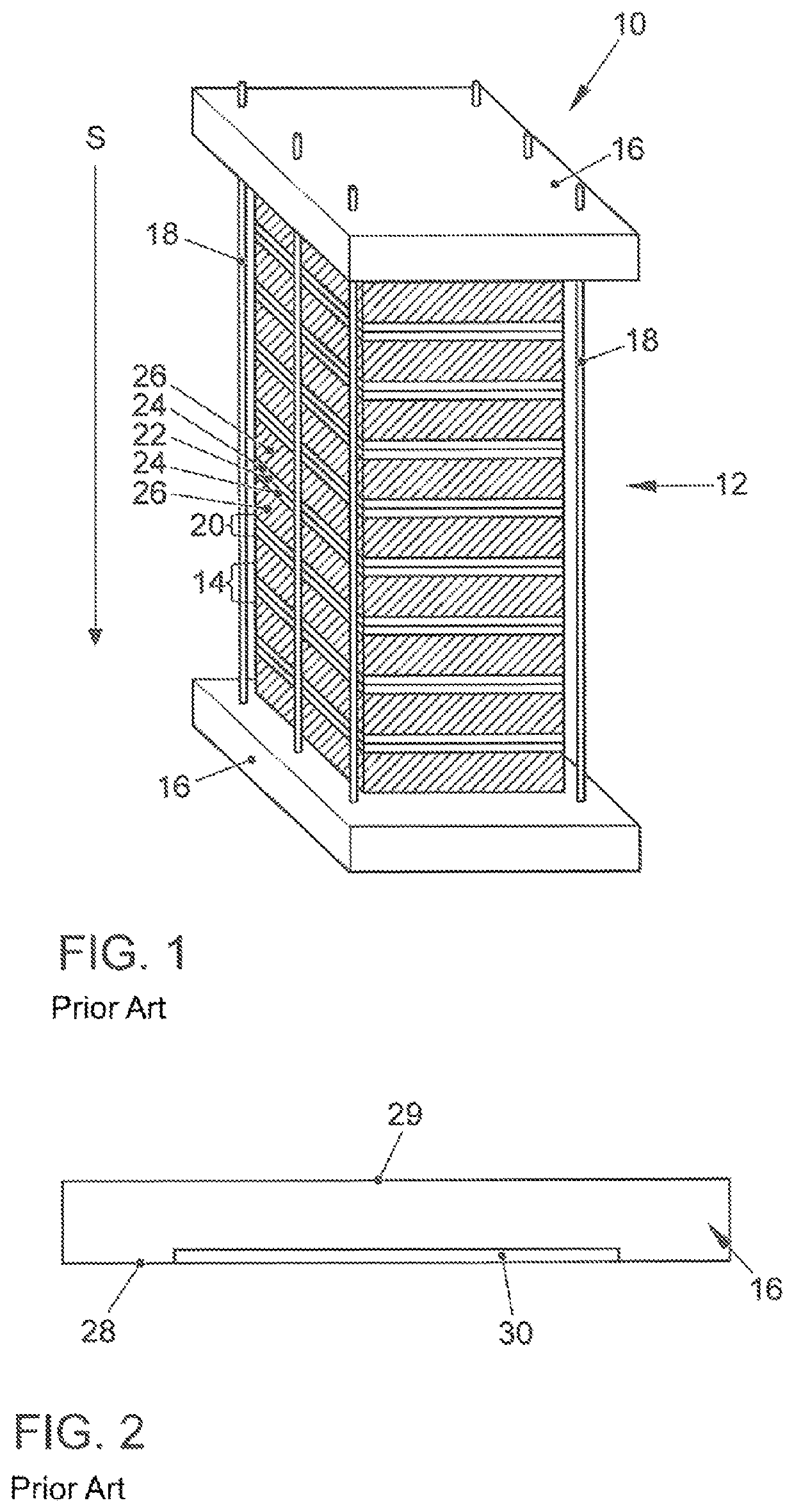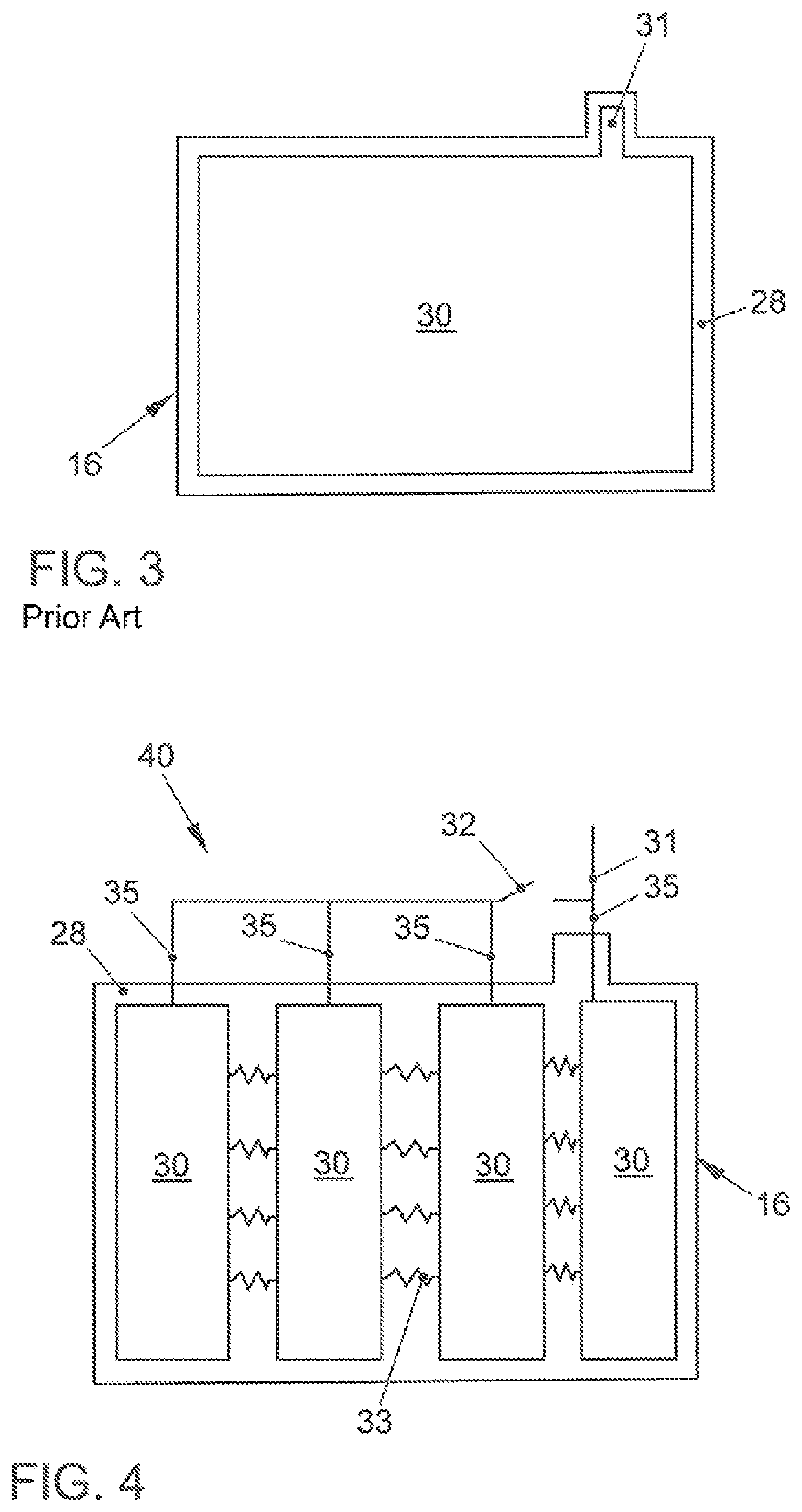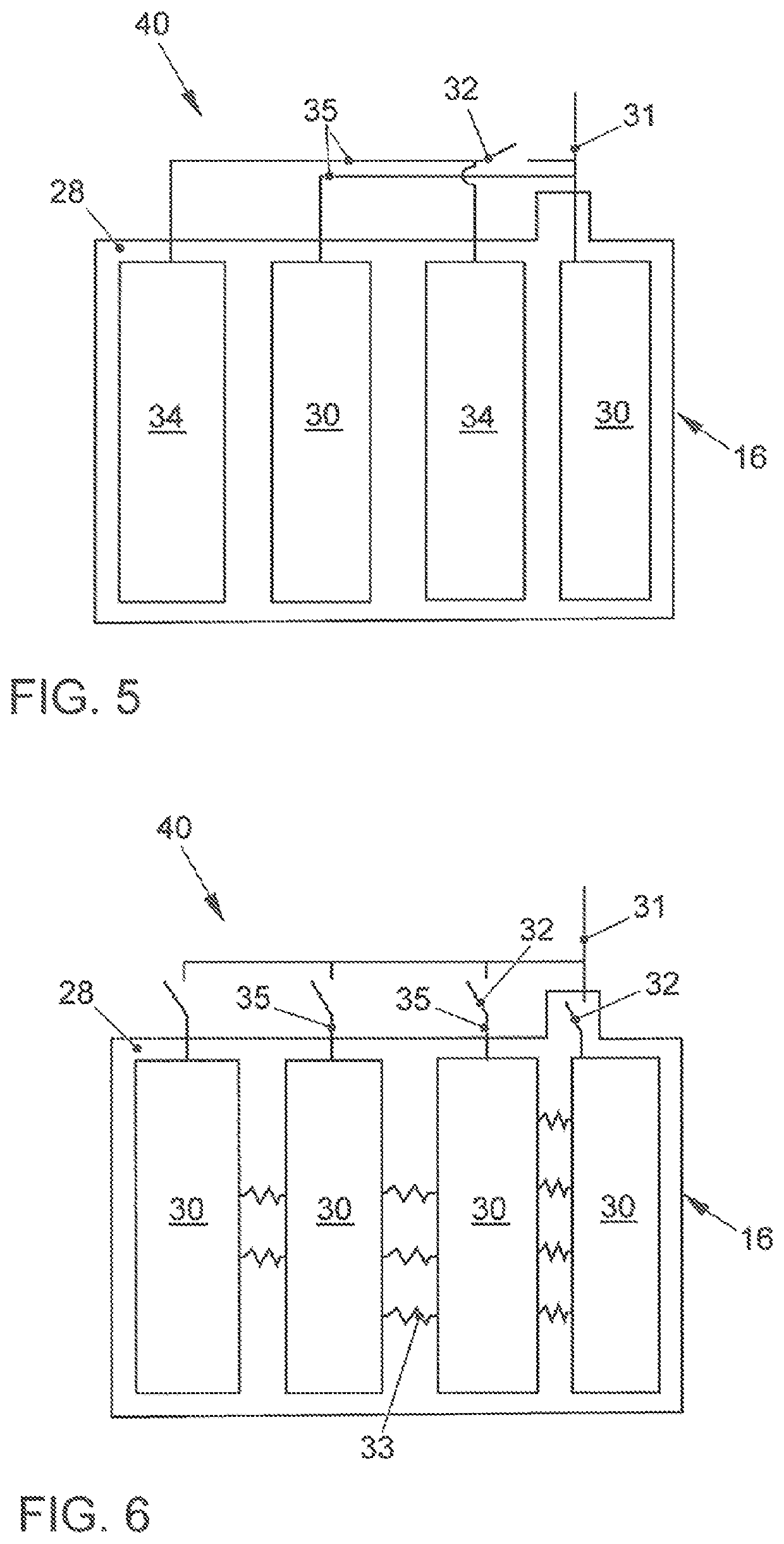Electrical contact device for a fuel cell stack
a technology of electrical contact device and fuel cell stack, which is applied in the direction of fuel cell details, electric generators, fuel cells, etc., can solve the problems of reducing the efficiency of the fuel cell stack, water from the operating media or exhaust gases condensing out on the end plates, and causing danger, so as to achieve the minimum installation space requirement of the electrical contact device, increase resistance, and increase heat accumulation
- Summary
- Abstract
- Description
- Claims
- Application Information
AI Technical Summary
Benefits of technology
Problems solved by technology
Method used
Image
Examples
first embodiment
[0043]FIG. 4 shows an electrical contact device 40 according to a Contact device 40 may be arranged in one or a plurality of recesses of first main surface 28 of an end plate 16, as depicted in FIG. 2. Alternatively, contact device 40 may be arranged above the first main surface 28 of end plate 16, and an elastic insulating film may be arranged between contact device 40 and end plate 16.
[0044]The contact device according to the first embodiment has four contact regions 30 which are formed by thin copper layers. The copper layers 30 were preferably electrostatically deposited on end plate 16 or on an insulation plate arranged between end plate 16 and contact structure 40. Each of the contact regions 30 is connected via a first contact structure 35 to an external load current circuit 31, of which only a section is depicted. A contact region 30 arranged toward the outside is directly connected to load current circuit 31 via a first contact structure 35. The first contact structures 35...
second embodiment
[0048]In contrast to FIG. 4, an electrical contact device 40 according to the present disclosure which is shown in FIG. 5 has a plurality of first contact regions 30 and a plurality of second contact regions 34. The first and second contact regions 30, 34 engage with one another in the manner of fingers. First contact structures 35 connected to first contact regions 30 are bundled, just as are first contact structures 35 connected to second contact regions 34. Bundled first contact regions 30 are simply connected to load current circuit 31, whereas a switching element 32 is arranged between bundled second contact regions 34 and load current circuit 31. In contrast to the embodiment shown in FIG. 4, the contact device 40 shown in FIG. 5 has no second contact structures 33.
[0049]In a first working position of switching element 32, it produces an electrically conductive connection between the bundle of first contact structures 35, which are connected to second contact regions 34, and l...
third embodiment
[0050]an electrical contact device 40 according to the present disclosure as shown in FIG. 6 again has four uniform contact regions 30. Each contact region 30 is connected via a first contact structure 35 to an external load current circuit 31, wherein a switching element 32 is arranged in each first contact structure 35 between each contact region 30 and the load current circuit 31. Therefore, a direct connection can be either disconnected or established between each contact region 30 and load current circuit 31 by operation of the respectively associated switching element 32. The number of contact regions 30 that are connected in parallel with respect to the load current circuit is therefore variable.
[0051]Second contact structures 33 each connect two adjacent contact regions 30 to each other in an electrically conductive manner. In this arrangement, the electrical resistance of second contact structures 33 varies within contact device 40. In FIG. 6, this is depicted by variation ...
PUM
| Property | Measurement | Unit |
|---|---|---|
| electrical current | aaaaa | aaaaa |
| electrically conductive | aaaaa | aaaaa |
| electrical resistance | aaaaa | aaaaa |
Abstract
Description
Claims
Application Information
 Login to View More
Login to View More - R&D
- Intellectual Property
- Life Sciences
- Materials
- Tech Scout
- Unparalleled Data Quality
- Higher Quality Content
- 60% Fewer Hallucinations
Browse by: Latest US Patents, China's latest patents, Technical Efficacy Thesaurus, Application Domain, Technology Topic, Popular Technical Reports.
© 2025 PatSnap. All rights reserved.Legal|Privacy policy|Modern Slavery Act Transparency Statement|Sitemap|About US| Contact US: help@patsnap.com



